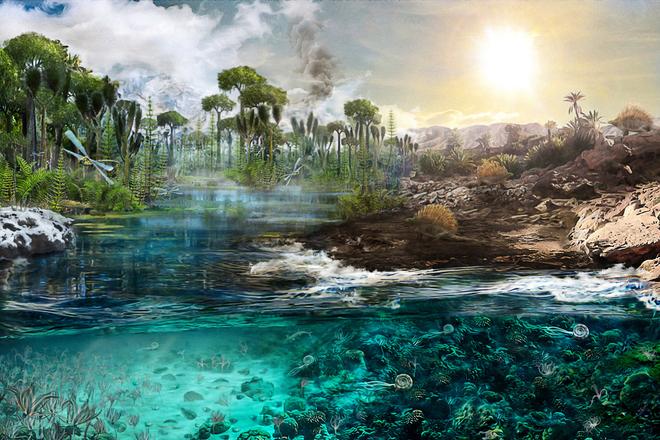Starting around 370 million years ago, Earth was descending into one of the most intense ice-age periods. Large parts of the planet were covered by ice. The so-called Late Palaeozoic Ice Age lasted around 100 million years.
When it comes to global climate, the role of CO2 is known about, especially with regards to current climate change. However, it is much less understood how CO2 has influenced the transition between cool and warm climates in the distant past. As such, the Late Palaeozoic ice age is something of an enigma.
Although the evidence for it was found in glacial strata, these are difficult to date, and the record is incomplete and patchy, making the reconstruction of CO2 levels difficult, Slovak scientist Hana Jurikova from the University of St Andrews in Scotland told the Slovak Spectator.
She leads an international team that for the first time has uncovered the role CO2 played in the Late Palaeozoic Ice Age. The team used a novel approach pioneered by Jurikova herself and refined by her team. Their findings were recently published in the journal Nature Geoscience.

To stay up to date with what scientists in Slovakia or Slovak scientists around the world are doing, subscribe to the Slovak Science newsletter, which will be sent to readers free of charge four times a year.
A world (almost) unlike our own
During the Late Paleozoic Ice Age the world may have looked like a vastly different place compared to how it is now, but its climatic conditions were not as drastically different as initially thought.
According to Jurikova, this was when Gondwana in the southern hemisphere started colliding with Laurasia in the northern hemisphere, eventually forming one giant supercontinent called Pangea approximately 335 million years ago. The collision led to the so-called Variscan orogeny, a massive mountain-building belt, the remnants of which can be seen today, for example, in the Pyrenees.
"High and mid-latitudes were largely covered by ice, shrinking much of the habitable realm to the tropics. Lush "coal rainforests" with tall tree-ferns spread across the widespread swamp environments in the humid tropics," explains Jurikova, adding that these would later form much of our coal reserves.
"Amphibians were diverse, 2-metre dragonflies flew in the air, while millipedes roamed the earth. Shallow tropical seas were full of life with coral reefs, crinoid gardens, brachiopods, and swimming sharks and fishes."



 A Palaeo-artistic rendering based on findings of this and previously published studies shows how a relatively rapid rise in atmospheric CO2 approximately 294 million years ago released Earth from its penultimate icehouse (left) and transitioned the world to a warmer and drier climate of the Early Permian (right). (source: Nature Geoscience/10.1038/s41561-024-01610-2)
A Palaeo-artistic rendering based on findings of this and previously published studies shows how a relatively rapid rise in atmospheric CO2 approximately 294 million years ago released Earth from its penultimate icehouse (left) and transitioned the world to a warmer and drier climate of the Early Permian (right). (source: Nature Geoscience/10.1038/s41561-024-01610-2)